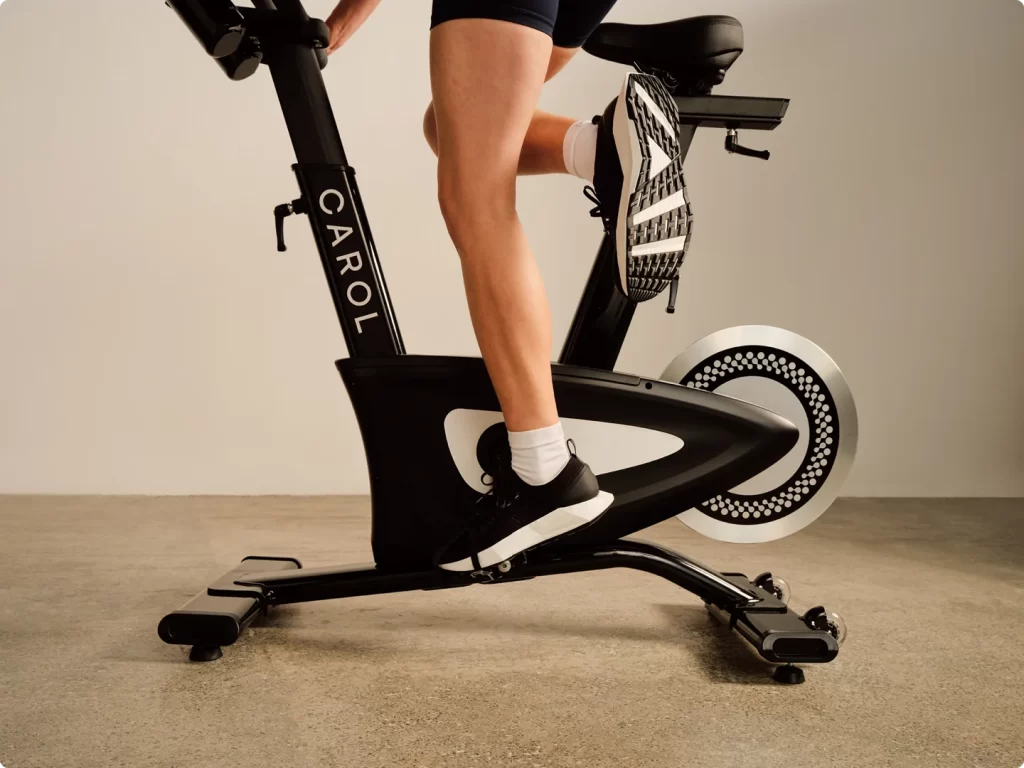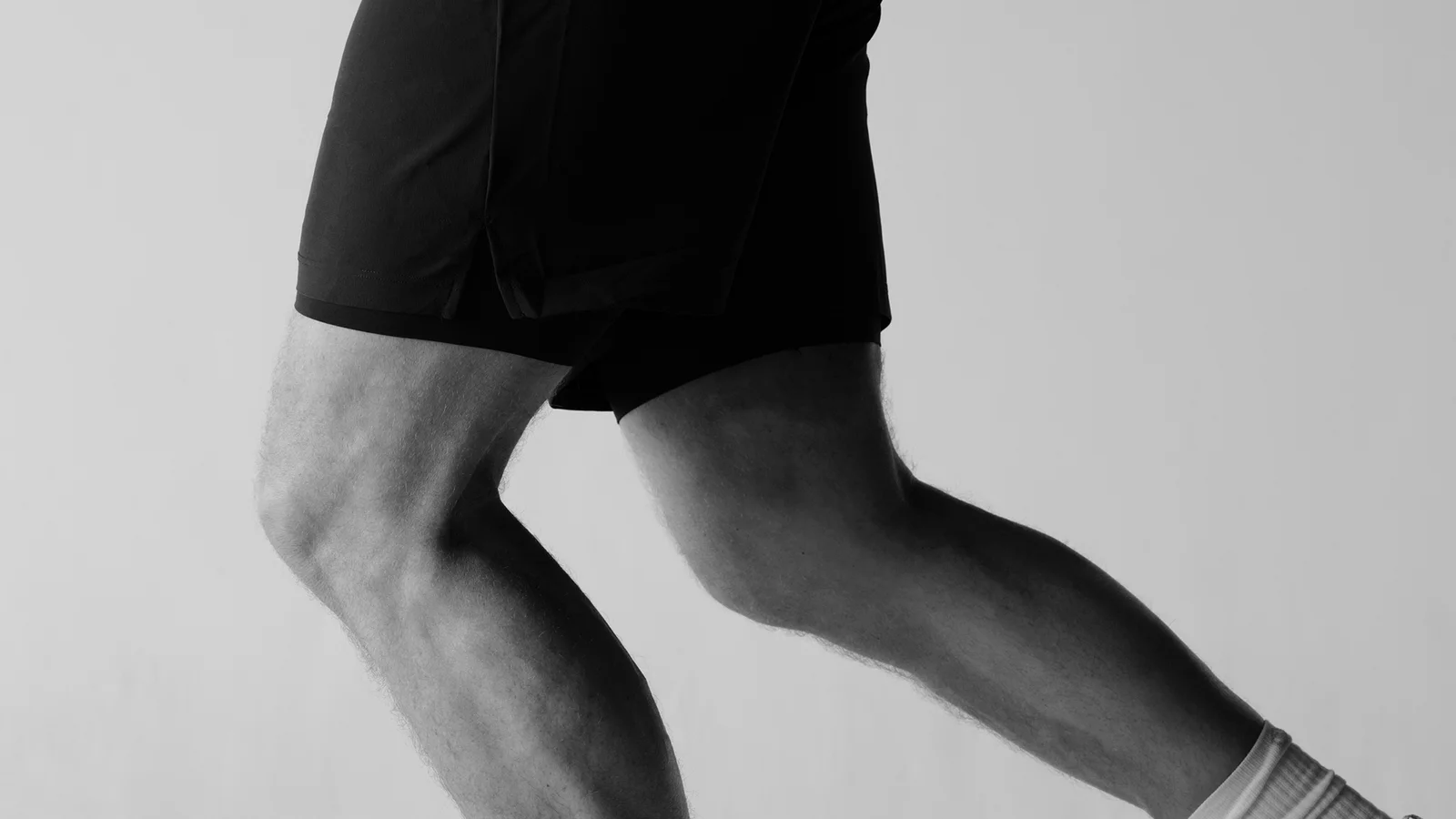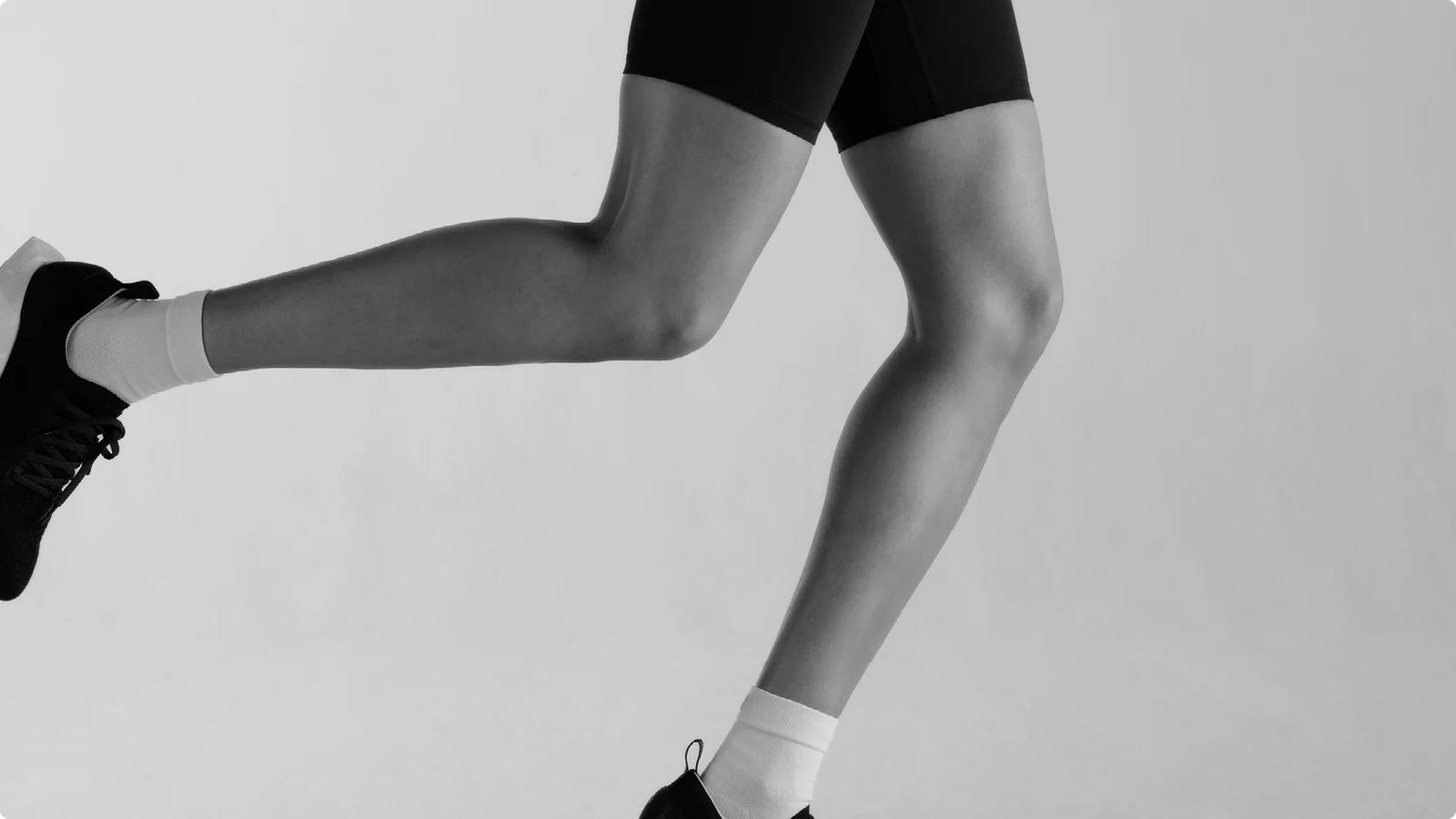Leg workouts for overall health and improved cardio performance
Leg workouts are integral to your overall health and will improve your cardio performance. When building your training plan, you can combine variations of the most common basic exercises—like squats, lunges, and step-ups—that can easily be done at home. We’ve compiled an exercise plan for you, consisting of 10 scientifically proven leg workouts.
The majority of these exercises require a chair or bench, and a barbell loaded with your personalized weight.
How long and how often should you do strength training?
Research shows that there is no noticeable difference in muscle growth between having 1 leg day workout per week or 3. What does make a difference is higher volume sessions—that is, how many sets and reps you’re completing. For this exercise plan, begin by doing 3x sets of 8–12 reps of each exercise, ensuring that your muscles get fatigued—but not so much that you feel pain. When this becomes too easy, you can increase the number of reps or use one of the advanced techniques at the end of this article to make your home leg workouts more challenging.
Let’s begin.
5–10 minute warmup
Starting with a 5–10 minute warmup consisting of moderate aerobic activity will reduce your risk of injury and improve your performance. An elliptical or stationary bike workout followed by some stretching is a great way to warm up your muscles.
A great option here would be CAROL Bike’s Free Rides, which offer zone-based and target-power rides. Simply select your desired zone or target power and CAROL Bike will automatically adjust the resistance for you.

CAROL Bike’s Free Rides offer zone-based and target-power rides that automatically adjust the resistance for you.
1. Squats
A squat is a fundamental exercise in any leg workout. Squats involve a wide range of motions that activate lower-body muscle groups. There are a range of squat variations, including front and back squats, squat jumps, and squat lunges.
To begin, stand with your feet shoulder-width apart, look ahead, and push your rib cage slightly outward. Sit back into your hips, bend your knees, and drop down toward the floor. Ensure that your knees move slightly outward and do not collapse inward. Drop lower until your thighs are parallel to the ground, and then push back up to a standing position.
If you want to make this more challenging—and target different parts of your body—you can use a barbell. To target the back of your body, including the glutes and hamstrings, load a barbell onto your traps. To target the front of your body, including the quadriceps, the technique is similar to the back squat, but you put a barbell onto the front of your shoulders. Different bar placements during your squats will help you focus on different muscle groups: according to science, high-bar squatting activates the quadriceps whereas low-bar squatting activates the glutes.
Make sure the squats you are doing are deep enough. It has been proven that deep squats are much more effective in training all major muscle groups compared to shallow squats.
2. Lunges
Lunges are an effective leg workout that challenges your balance as well as your quads, hamstrings, and glutes. This exercise is important for both strengthening and injury prevention. A 2009 study found that lunges are even more efficient than squats for muscle activation. As with squats, you can diversify your workout using variations such as back, walking, lateral, or reverse lunges.
Let’s start with the basic variation: the static lunge. Put your feet hip-width apart, with one foot in front of the other. Raise your back heel off of the ground and bend your knees to a 90-degree angle. Push into both feet to straighten the knee and return to the upright position.
3. Romanian deadlift
Although squats strengthen your glutes and quads, studies have shown that squats are the least efficient strength training exercise for activating your hamstrings. Conversely, the Romanian deadlift was ranked the highest.
It’s a great idea to combine hip extension and knee flexion-based movements because the leg curl is better at activating the outer hamstrings, whereas the Romanian deadlift activates primarily the inner hamstrings. According to a number of studies, a combination of both gives the best result in stretching this muscle group.
To do a Romanian deadlift, hold a barbell and keep your back straight, then begin to bend your knees and lower yourself toward the ground until you feel a stretch in your hamstrings. Pause, then straighten your hips to stand up, using your glutes to power the movement.

The Romanian deadlift is the most efficient strength training exercise for activating your hamstrings.
4. Step-ups
Step-ups are a great way to increase strength, balance, and power. You will need to put a bench or a chair in front of you before starting. Simply step onto the bench or chair with your right foot, and push through your heel to step with your left foot and bring your feet together. Step down with your left foot first and then with your right foot to return to the starting position. Repeat again alternating the feet.
5. Hip thrusts
Hip thrusts are great for building strength and size in your glutes. You will need a bench or chair to begin. Sit on a chair and support your weight with your hands. Scoot your back down the chair, with your knees bent and your feet shoulder-width apart. Your legs should form a 90-degree angle while your shoulders should be pressed against the chair. Lower your butt down toward the ground, then push up through your heels to make your hips parallel to the floor again, returning to the starting position.
6. Wall pilates
This is a very efficient and unique strength training exercise—and all you need is a wall! By enhancing traditional Pilates movements, you’ll gain increased leg strength, flexibility, and balance. Movements include wall lunges, wall squats and wall-assisted bridges. For a more detailed guidance, visit here.
7. Good mornings
“Good mornings” work to build stronger hamstrings, glutes, and erectors. This exercise also improves the back strength necessary for heavy squats and deadlifts, so it should be integral to your leg workout routine. To begin, put a barbell onto your traps and keep your feet shoulder-width apart. Hinge at your hips and move slowly toward the ground, while sending your butt backward and keeping your chest up. When you feel a stretch in your hamstring, use your glutes to return to the starting position.
8. Bulgarian split squats
This unilateral leg exercise activates your quadriceps, glutes, hamstrings, and even the core muscles. You will need a chair or a bench. Stand facing away from the chair, close enough that you can reach it with your leg. Lift your right leg behind you and place it on top of the chair. Lean slightly forward to keep balance and start bending your left knee until your thigh is parallel to the ground. Push up to return to the starting position, and change legs.
9. Leg raises
Leg raises are one of the easiest and best home leg workouts focusing on the inner and outer sides of your thigh. Start by lying on your side with your legs straight, one above the other. Lean on your arm to lift your upper body from the ground, then lift your top leg toward the ceiling. Repeat on both legs. If you want a challenge, try crossing your legs and lifting the bottom leg toward the ceiling.
10. Single-leg deadlift
This exercise helps strengthen your hamstring while improving balance. Stand straight, put your weight on your left foot, and begin to lower down at your waist, keeping your left knee soft. As you hinge, lift your right leg back until your body forms a straight line from head to toe. Hold this position for a few seconds, then return to standing and repeat. Alternate your legs.
Techniques to increase difficulty
As you progress, you can gradually increase the difficulty of your workout according to your fitness goals. Here are some ways to challenge yourself:
– You can add free weights such as dumbbells and barbells to almost all of the above exercises.
– Use resistance bands to fix your legs hip-width apart during the exercise.
– If you elevate your heels during squats and other quadriceps-focused movements, your knees and hamstrings will flex more deeply.
– Pause at the peak moment of an exercise to increase the tension.
If you include these 10 exercises in your home workout routine, you will see results within a few weeks of regular practice.
Stronger legs will not only contribute to your good form, but they will also improve your cardio performance. This is great preparation for CAROL Bike REHIT workouts that deliver superior health and fitness benefits of regular exercise in 90% less time.


